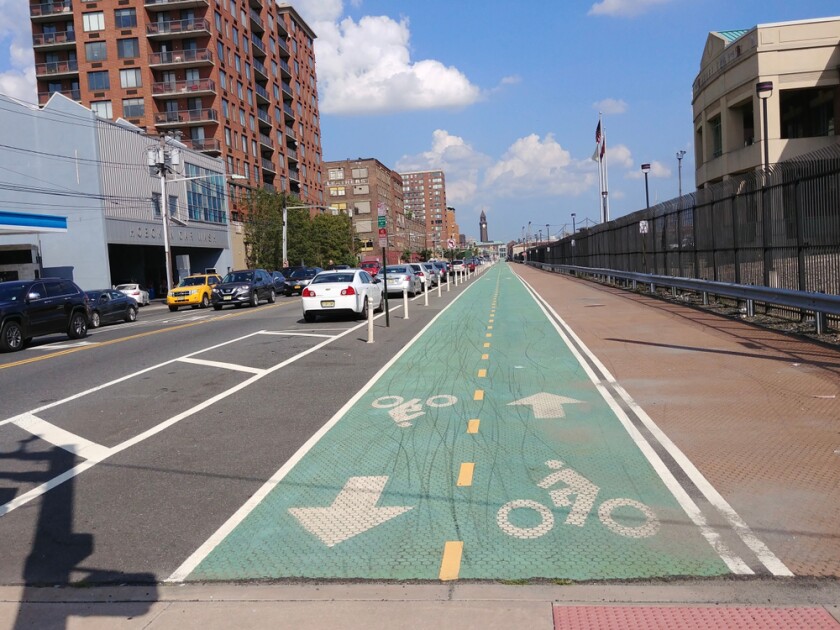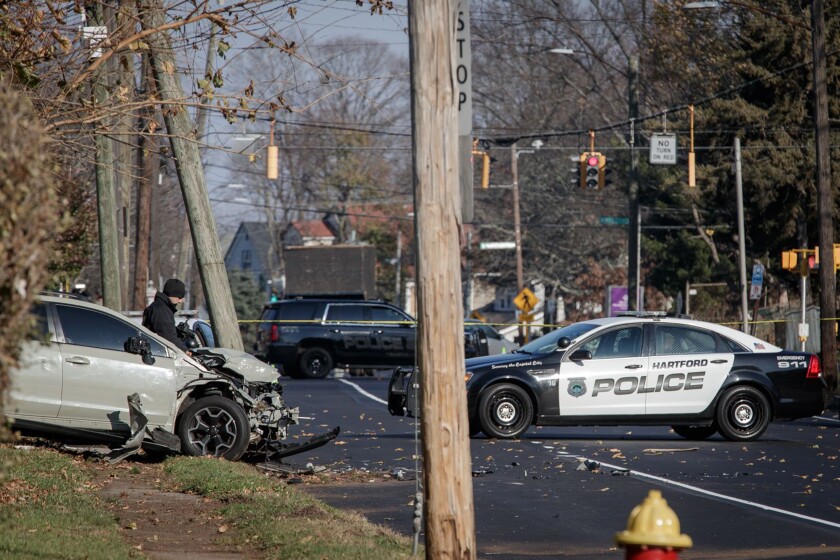In Brief:
One of the most notoriously auto-centric cities in the world could become a lot more welcoming to pedestrians, bikers and bus riders under a new ballot measure that passed on Tuesday.
Los Angeles voters approved Measure HLA, which would require the city to implement parts of its mobility plan every time it repaves a street, with a 63 percent majority. The measure could add hundreds of miles of bike lanes, bus lanes and safety improvements to sidewalks and crossings on L.A.’s streets.
The proposal was pitched primarily as a safety plan. Campaign backers put up a billboard saying that more pedestrians were killed on Vermont Avenue in L.A. than in the whole state of Vermont in 2022.
They say the margin of victory shows a growing concern for street safety even among people who mostly drive to get around. “L.A. is the car capital of the country," says Michael Schneider, director of the advocacy group Streets for All, which organized the campaign. "We’re mocked for it."
Most trips in L.A. are short: Half of all car trips are less than three miles and 30 percent are less than a mile, Schneider says. If there were safer, faster ways to get around without a car, more people might prefer to do that. “Not everybody needs to drive for every single trip all the time,” he says.
Implementing an Existing Plan
The measure was notable partly because it would implement a plan that city leaders had already debated and agreed to. In 2015, the L.A. City Council approved Mobility Plan 2035 by a vote of 12-2.
That plan set a goal of eliminating traffic deaths by 2035, and laid out a series of improved networks for cyclists, walkers, transit riders and drivers. But not much of the plan has been completed. According to the Yes on HLA campaign, less than a tenth of the transit lanes and bike lanes in the mobility plan have been finished.
L.A. had more than 300 traffic deaths in 2022, with more than 150 pedestrians killed. An L.A. Times editorial writer wrote that year that the mobility plan had been an “empty promise.”
When Schneider started collecting signatures for the measure in 2022, he says people would regularly ask him why the referendum was needed if the City Council had already agreed to the plan. But the plan was never an ordinance, and Measure HLA makes it so. Whenever the city repaves more than one-eighth of a mile on a street that’s marked for upgrades in the mobility plan, it will now be required to complete those upgrades. “All this does is say you actually have to do it,” Schneider says.

Mel Melcon/TNS
Potential Roadblocks
Organized opposition to Measure HLA came from the local firefighters union, which argued that some components of the plan would slow emergency response times. After the vote, a union leader told the L.A. Times, “The residents of Los Angeles will realize what we have been saying, that it’s going to delay response times and not going to help with the traffic.”
The city administrative officer also issued a $3.1 billion cost estimate for implementing the plan, which Schneider describes as “outlandish.” The Yes on HLA campaign maintained that the plan would actually make emergency response somewhat faster if fully implemented.
Some top city leaders, including Mayor Karen Bass, didn’t take a position on the measure. Schneider says there are varying levels of enthusiasm for the plan in the two city agencies that will be in charge of implementing it. If they were really determined to, the agency could find ways to work around the ordinance, Schneider says, for example by paving one-ninth of a mile at a time to avoid triggering the requirements. “It’s not a very functional way to run a city, and I think the roads would deteriorate faster if they did that,” he says.
If city agencies do ignore the law, paving over select streets without adding bike lanes or other upgrades, anyone can sue them under the terms of Measure HLA. “But our goal isn’t to sue them,” Schneider says. “We just want them to do their own plan.”
A National Trend
The vote comes amid a growing push to address traffic accidents across the U.S. “The voters of Los Angeles spoke up clearly that they want city leaders to live up to their Vision Zero commitment and invest in safe mobility for all road users, especially for people walking and biking,” says Leah Shahum, director of the Vision Zero Network. “The message clearly resonated with voters that car crashes are the leading cause of death of kids in L.A., and that’s unacceptable and it’s preventable.”
The degree of support for street safety measures could be especially important coming from a city like L.A. Changes to street designs that reduce space for cars or slow down speeds are often hard-fought, generating lots of fights among residents, business owners and planners. Some leaders may be tempted to let such projects fall through to avoid upsetting local residents.
But the L.A. vote should inspire other cities to push harder, says Matt Lewis, a housing and bike advocate based in Berkeley. “I think any politician who’s inclined towards safe streets and transit is going to take a look at this and say, ‘I’m willing to bet that my city has a similar constituency for this that’s been ignored for years,’” Lewis says.












